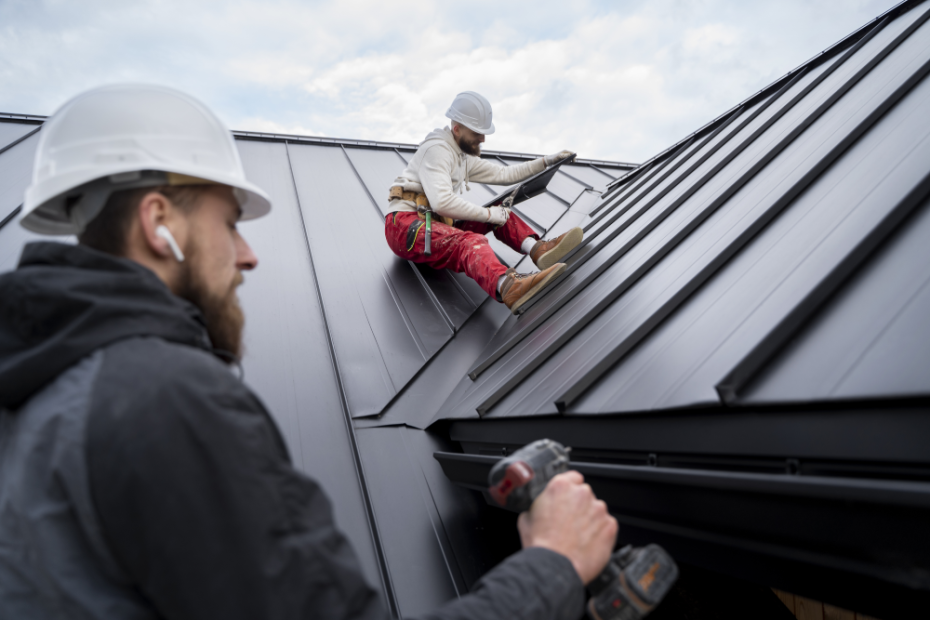Your roof does more than just keep the rain out—it plays a huge role in how comfortable your home feels and how much you spend on energy bills. If your roof is old, damaged, or simply outdated, it could be silently costing you hundreds of dollars each year. That’s where roof replacement services come in. By upgrading to a new, energy-efficient roof, you can transform your home’s performance, save money, and even help the environment. Let’s dive into how roof replacement makes such a big difference, what to look for in roof replacement services, and how Blue Peaks Roofing can guide you through the process.
Understanding Energy Efficiency in Roofing
Energy efficiency might sound like a buzzword, but when it comes to your roof, it’s all about keeping your home at the right temperature without overworking your heating and cooling systems. An energy-efficient roof reflects sunlight, insulates your home, and allows proper airflow. These three factors work together to reduce the amount of energy needed to keep your living spaces comfortable, no matter the season.
Older roofs often lack modern insulation, have poor ventilation, and absorb too much heat. This means your air conditioner has to run longer in the summer, and your heater works harder in the winter. Roof replacement addresses these issues head-on by installing materials and systems designed for maximum efficiency. Roof replacement services from a trusted provider like Blue Peaks Roofing ensure that every layer of your new roof is optimized for energy savings, from the shingles down to the insulation and ventilation.
The Science Behind Cool Roofs and Insulation
One of the biggest advances in roof replacement is the use of “cool roof” technology. These roofs are made with materials that reflect more sunlight and absorb less heat than traditional roofs. Imagine your roof acting like a giant sun umbrella—instead of soaking up the sun’s rays and turning your attic into an oven, a cool roof bounces that energy back into the atmosphere. This can lower the temperature inside your home by several degrees, which means your air conditioner doesn’t have to work as hard.
But reflection is only part of the story. Insulation is equally important. Modern roof replacement services include high-quality insulation with a higher “R-value,” which measures how well the material resists heat flow. Better insulation means less heat escapes in the winter and less heat enters in the summer. When you combine reflective materials with top-notch insulation, you get a roof that’s a true energy-saving powerhouse.
Ventilation is the third piece of the puzzle. A well-ventilated roof allows hot air to escape in the summer and prevents moisture buildup in the winter. Without good ventilation, heat and humidity can get trapped, leading to higher energy bills and potential damage to your roof structure. Roof replacement gives you the chance to install ridge vents, soffit vents, or other systems that keep air moving freely, further boosting your home’s efficiency.
Choosing the Right Materials for Maximum Efficiency
Not all roofing materials are created equal when it comes to energy efficiency. Here’s a quick rundown of some of the best options available through roof replacement services:
- Metal Roofs: Highly reflective, durable, and long-lasting. Metal roofs can dramatically reduce cooling costs, especially in sunny climates.
- Asphalt Shingles with Reflective Coatings: Modern asphalt shingles can be treated to reflect more sunlight, offering a balance of affordability and efficiency.
- Clay and Concrete Tiles: These natural materials provide excellent insulation and can be designed to reflect heat.
- Solar Shingles: For the ultimate in energy savings, solar shingles generate electricity while protecting your home.
The color of your roof also matters. Light-colored or reflective roofs are best for hot climates, while darker roofs can help absorb heat in colder regions. Roof replacement is the perfect time to choose materials and colors that match your local climate and your energy goals.
The Roof Replacement Process: What to Expect
If you’re considering roof replacement services, it’s helpful to know what the process involves. Here’s a typical timeline:
- Inspection and Estimate: A professional roofer will assess your current roof, identify any issues, and recommend the best materials and solutions for your home.
- Material Selection: You will choose from a range of energy-efficient options, balancing performance, aesthetics, and budget.
- Removal of Old Roof: The existing roof is carefully removed, and the underlying structure is inspected for damage.
- Installation of New Roof: New underlayment, insulation, and roofing materials are installed, with attention to proper ventilation and sealing.
- Final Inspection: The completed roof is checked for quality and performance, ensuring everything meets energy efficiency standards.
Throughout the process, a company like Blue Peaks Roofing will keep you informed and answer any questions you have about roof replacement and how it will improve your home’s energy efficiency.
Common Myths About Roof Replacement and Energy Efficiency
There are a few misconceptions about roof replacement services and energy savings. Let’s clear them up:
- Myth: A new roof won’t make much difference in my energy bills.
Fact: Modern materials and techniques can lead to significant savings, especially if your old roof was poorly insulated or ventilated. - Myth: All roofing materials are basically the same.
Fact: There are huge differences in reflectivity, insulation, and durability. Choosing the right material is key to maximizing efficiency. - Myth: Ventilation isn’t that important.
Fact: Proper airflow is crucial for preventing heat buildup and moisture damage, both of which can hurt your energy savings.
Blue Peaks Roofing
8000 S Lincoln St Ste #201, Littleton, CO 80122, United States
+19704103778

